METODOLOGIE DI MINIMIZZAZIONE COSTI E TEMPI DI MANUTENZIONE DELL’OPERA EDILIZIA
METHODOLOGIES FOR MINIMISING BUILDING MAINTENANCE COSTS AND TIMES
- 16 Giu 2024
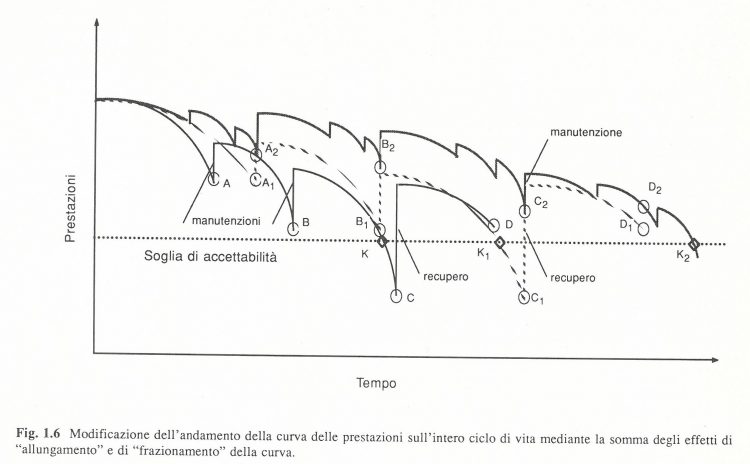
La durabilità di un’opera edilizia e, quindi, un minor costo di manutenzione è un elemento fondamentale nella sua progettazione sia nel campo di edilizia privata sia ed in particolare per quella pubblica. Di fatto si tratta di una sistematica individuazione ed utilizzo di materiali che consentano una maggiore durata in termini di life-cicle ossia che presentino una curva di guasto con inclinazione minore rispetto alle tempistiche previste di utilizzo del manufatto edilizio e, quindi, con caratteristiche qualitative oltre lo standard. Nello specifico, restando nella tipologia standard di opere in cemento armato e in acciaio, gli ambiti dove si può operare sono i seguenti:
- Calcestruzzi a bassa permeabilità – l’obiettivo verrà raggiunto operando nell’ambito di mix-design opportuno finalizzato alla massima riduzione dell’acqua in modo da minimizzare la formazione dei canali intercapillari. In modo analogo si opererà con additivi in polvere ad attività pozzolanica a base di silica fume densificata dotati ovviamente di EPD nel rispetto delle norme ISO 14025 and EN 15804+A2 ovvero idrofobi di sola associazione ad oli vegetali, derivati di acidi grassi a lunga catena.
- Prodotti e materiali a base di legno con maggiore resistenza agli agenti atmosferici – utilizzo di essenze con predilezione, in accordo con la UNI 11035-1/2 S, al castagno (classe di resistenza: D24 o C30), abete bianco e rosso (classe di resistenza: C30), douglaisia (classe di resistenza: C24)
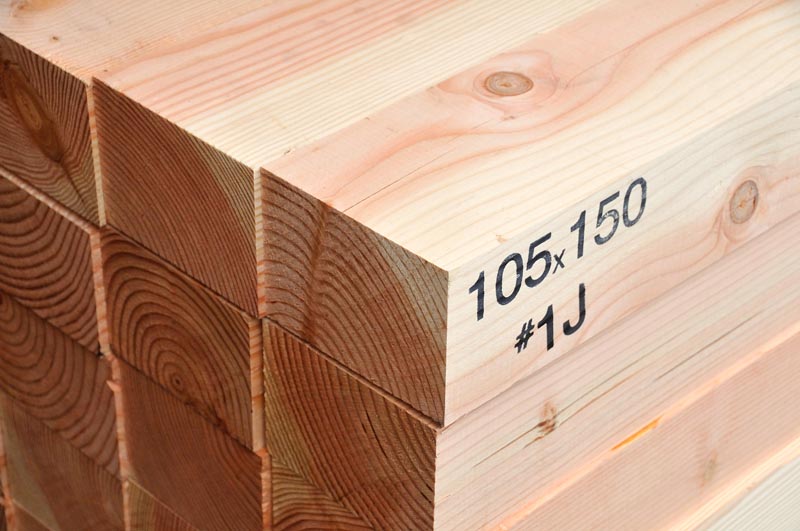
immagine da https://americansoftwoods.com/
- Ghisa, ferro, acciaio con livello di protezione all’ossidazione maggiorato – in riferimento alla componente di acciaio per uso non strutturale (ovvero strutturale ma per elementi di fissaggio e di supporto), fermo restando il rispetto delle quote in riciclato di base, si considererà l’utilizzo generalizzato di elementi standard in acciaio zincato a caldo realizzata secondo la UNI EN ISO 1461 con relativa EPD secondo ISO 14025 e EN 15804 che non modifica la riciclabilità del materiale. Con riferimento ad un elemento di spessore 6 mm installato in classe di corrosività C3 (Ambienti urbani e industriali, modesto inquinamento da anidride solforosa) in cui il contesto dell’opera può collocarsi, si avrà, ad esempio, una perdita di zinco 1,4 µm/anno che ci porta ad una durabilità di 60 anni già superiore al tempo previsto per l’opera stessa.
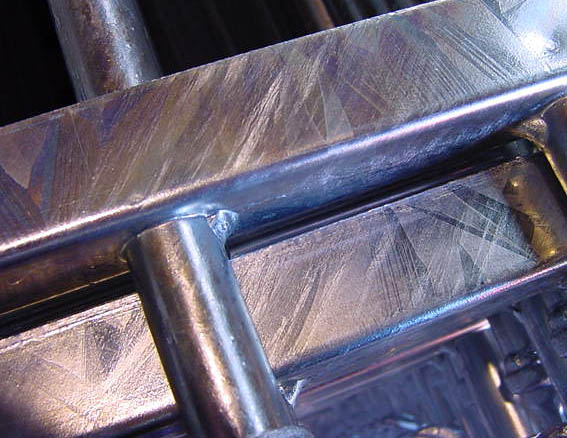
immagine da https://icometprogetti.com/
- Componenti in materie plastiche con maggiore resistenza agli agenti atmosferici – utilizzo di componenti in HDPE (polietilene ad alta densità), rigido e resistente che è anche posizionato ai livelli superiori nella filiera del riciclo meccanico in virtù delle sue caratteristiche di resistenza e versatilità. Questo materiale si trova in molti dei rifiuti plastici avviati al riciclo, come flaconi per detergenti, shampoo, detersivi, oltre a tappi per le bottiglie.
- Tamponature, tramezzature e controsoffitti di qualità superiore – nell’utilizzo di separazioni in cartongesso saranno utilizzati elementi con incrementata densità del nucleo. Questo tipo di lastra, è realizzata unendo al gesso delle fibre di vetro e legno. In questo modo si crea un cartongesso armato, caratterizzato da un elevato grado di durezza superficiale e un’ottima resistenza meccanica. Tali elementi mantengono altresì un ridotto assorbimento di acqua, anche in presenza di forti gradi di umidità e quindi una maggiore durabilità del componente.
- Isolanti termici ed acustici di prestazioni superiori – l’incremento di prestazioni viene concentrato soprattutto nel contatto tra struttura e terreno che è quello di particolare iterazione nonché di costo aggiuntivo in relazione ad attività di manutenzione. In tale caso viene prevista l’introduzione di uno strato interfaccia in lastre di vetro cellulare per l’isolamento dei pavimenti che svolge la funzione di coibente termico, impermeabilizzazione, barriera al vapore e al gas Radon Rn222, quest’ultimo elemento fondamentale per garantire l’utilizzo e la presenza negli ambienti delle zone basamentali.
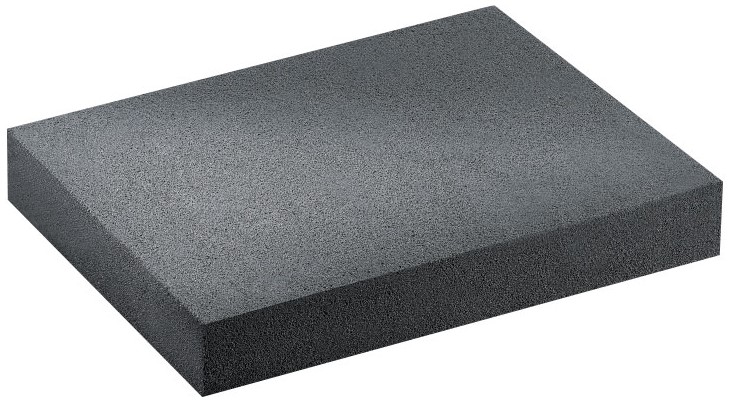
immagine da https://www.bacchispa.it/
- Pavimenti e rivestimenti interni ed esterni altoperformanti – nell’ambito delle pavimentazioni interne verranno utilizzate piastrellature in gres porcellanato ossia di qualità superiore. Nelle pavimentazioni esterne potranno essere usati elementi autobloccanti in plastica riciclata con caratteristiche di livello superiore ed in particolare: Resistenza all’abrasione (norma UNI 8298/9) mediante Abrasimetro Taber: Valore medio Perdita di massa 370 mg mola abrasiva tipo CS. 10 caricata con 10 N, Resistenza alla flessione eseguita in riferimento ai punti 3.1 e 3.2 del D.M. 3/6/68: Valore medio della Resistenza a Flessione 2,17 N/mm.
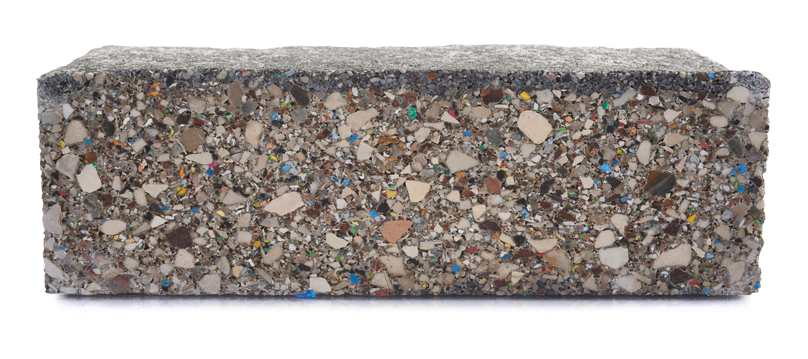
immagine da https://www.michelettopavimenti.it/
- Pitture e vernici autopulenti e di alta resistenza – nel rispetto dei criteri ecologie e prestazionali, verranno utilizzate per gli esterni pitture in grado di realizzare un film protettivo estremamente liscio e compatto che impedisce allo smog di aggrapparsi alle superfici, permettendo alla pioggia di rimuovere facilmente lo sporco e preservare l’estetica delle facciate. Tali tipologie garantiranno eccellente stabilità dei colori anche intensi, idrorepellenza, alta permeabilità al vapore acqueo, elevata resistenza allo sfarinamento, elevata protezione da muffe e alghe, elevato potere di anticarbonatazione. Per le pitture interne verranno utilizzate vernici con massima classe di copertura e lavabilità. in particolare: Potere coprente con resa di 6,7 m²/l (EN ISO 6504-3): > 99,5% – classe 1, resistenza alla spazzolatura a umido 200 cicli (EN ISO 11998): 13 micron, Classificazione EN 13300: classe 2, Brillantezza 85° EN ISO 2813: < 10, Dimensione massima particelle EN 21524: < 100 micron, Classificazione EN 13300: fine
- Impianto di illuminazione per interni ed esterni con maggiore resistenza all’usura – con riferimento alle serie di comando luce, prese FM, intercomunicazione e cover di componentistica in area pubblica verranno utilizzate serie con specifiche caratteristiche di resistenza, anche antivandaliche, (Grado di robustezza minimo IK07)
- Opere idrico sanitarie – introduzione di rubinetterie per utilizzi intensivi con pulsanti non girevoli per evitare qualsiasi rischio di usura prematura, con sistema antibloccaggio per impedire l’erogazione continua di acqua in caso di blocco del pulsante, in grado di assicurare una manutenzione facile tramite accesso rapido a tutte le componenti, con aeratore a stella per evitare il ristagno d’acqua e il deposito di impurità.
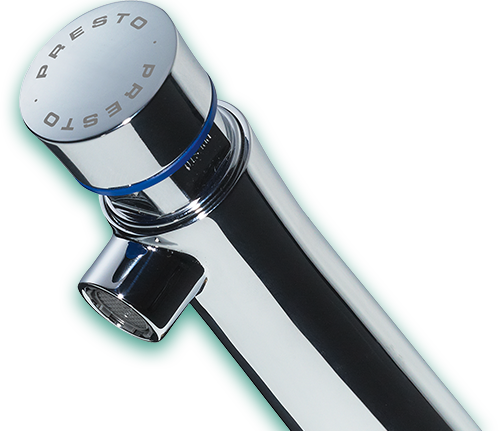
immagine da http://presto.it/
Fonti
Immagine di copertina da Manutenzione e gestione degli edifici complessi – Eugenio Arbizzani – Ed. Hoepli
https://www.michelettopavimenti.it/ri-made/ri-made-eco/
https://icometprogetti.com/zincatura-a-caldo/
https://americansoftwoods.com/it/gallery/douglas-fir/
https://www.bacchispa.it/isolanti-in-vetro-cellulare/glapor-isolanti-in-vetro-cellulare-in-lastre/
http://presto.it/download/LPNeo/
 Ing. Vincenzo Lacker
Ing. Vincenzo Lacker
The durability of a building work and, therefore, a lower maintenance cost is a fundamental element in its design both in the field of private and, in particular, public construction. In fact, it is a matter of systematically identifying and using materials that allow for a longer life cycle, i.e. materials that have a failure curve with a lower inclination with respect to the expected time of use of the building and, therefore, with quality characteristics beyond the standard. Specifically remaining within the standard type of reinforced concrete and steel works, the areas where it is possible to operate are as follows:
- Low permeability concretes – the objective will be achieved by operating within the framework of appropriate mix-design aimed at the maximum reduction of water so as to minimise the formation of inter-capillary channels. Similarly, we will work with powder additives with pozzolanic activity based on densified silica fume with EPD in compliance with ISO 14025 and EN 15804+A2 or hydrophobic with only vegetable oils, long chain fatty acid derivatives.
- Wood-based products and materials with increased resistance to atmospheric agents – use of wood species with a preference, in accordance with UNI 11035-1/2 S, for chestnut (resistance class: D24 or C30), white and red spruce (resistance class: C30), douglaisia (resistance class: C24)
- Cast iron, iron, steel with increased level of protection against oxidation – with reference to the steel component for non-structural use (i.e. structural but for fastening and support elements), without prejudice to compliance with the basic recycled quotas, the generalised use of standard hot-dip galvanised steel elements made in accordance with UNI EN ISO 1461 with relative EPD in accordance with ISO 14025 and EN 15804 will be considered, which does not modify the recyclability of the material. With reference to a 6 mm thick element installed in corrosivity class C3 (Urban and industrial environments, modest sulphur dioxide pollution) in which the context of the work may be located, we will have, for example, a zinc loss of 1.4 µm/year which leads us to a durability of 60 years already greater than the expected time for the work itself.
- Plastics components with higher weather resistance – the use of components made of HDPE (high-density polyethylene) will be preferred. HDPE is rigid and resistant and is also positioned at the upper levels in the mechanical recycling chain by virtue of its strength and versatility. This material is found in many of the plastic waste sent for recycling, such as bottles for detergents, shampoos, detergents, as well as bottle caps.
- Superior quality infills, partitions and ceilings – When using plasterboard partitions, elements with increased core density will be used. This type of sheet is made by combining glass and wood fibres with gypsum. This creates a reinforced plasterboard, characterised by a high degree of surface hardness and excellent mechanical strength. These elements also maintain low water absorption, even in the presence of high degrees of humidity, and thus greater durability of the component.
- Higher performance thermal and acoustic insulators – the increase in performance is concentrated above all in the contact between the structure and the ground, which is the one of particular iteration as well as additional cost in relation to maintenance activities. In this case, the introduction of an interface layer made of cellular glass sheets for floor insulation is foreseen, which performs the function of thermal insulation, waterproofing, vapour and Radon Rn222 gas barrier, the latter being a fundamental element to guarantee the use and presence in the rooms of the basement areas.
- High-performance interior and exterior floor and wall coverings – porcelain stoneware tiles will be used for the interior flooring, i.e. of superior quality but in compliance with the standards of the European WINCER project, i.e. with total substitution of feldspars and partial siliceous sands with clays with glass scraps and raw tiles. This advantage translates into an overall improvement in the environmental performance of the ceramic sector: less exploitation of natural raw materials, lower energy consumption and lower CO2 emissions. Moreover, 55% of tiles are made of glass from urban waste collection: the finest waste – less than 100 microns – that cannot be reused for the production of glass packaging. Dust, sludge and tiles broken before the firing stage account for 30% of the final product. Self-locking elements made of recycled plastic with superior characteristics will be used in outdoor paving, in particular Abrasion resistance (UNI 8298/9 standard) using Taber abrasimeter: Average value Mass loss 370 mg. abrasive wheel type CS. 10 loaded with 10 N, Flexion resistance performed with reference to points 3.1 and 3.2 of Ministerial Decree 3/6/68: Average value of Flexion Resistance 2.17 N/mm
- High-strength, self-cleaning paints and varnishes – in compliance with ecological and performance criteria, paints will be used for exteriors that can create an extremely smooth and compact protective film that prevents smog from clinging to surfaces, allowing rain to easily remove dirt and preserving the aesthetics of façades. These types will guarantee excellent colour stability even in intense colours, water repellency, high water vapour permeability, high resistance to chalking, high protection against mould and algae, and high anti-carbonation power. Varnishes with the highest covering power and washability class will be used for interior paints. in particular: Hiding power at a yield of 6.7 m²/l (EN ISO 6504-3): > 99.5% – class 1, resistance to wet brushing 200 cycles (EN ISO 11998): 13 microns, Classification EN 13300: class 2, Gloss 85° EN ISO 2813: < 10, Maximum particle size EN 21524: < 100 microns, Classification EN 13300: fine
- Indoor and outdoor lighting system with increased wear resistance – with reference to light control series, FM sockets, intercommunication and cover components in public areas, series with specific anti-vandal resistance characteristics will be used (minimum strength grade IK07)
- Sanitary water works – introduction of heavy-duty faucets with non-turning buttons to avoid any risk of premature wear and tear, with an anti-blocking system to prevent continuous water supply in the event of a button blockage, ensuring easy maintenance through quick access to all components. Maintaining a high level of hygiene through non-contact operation, star-shaped aerator to prevent water stagnation and the deposit of impurities.

